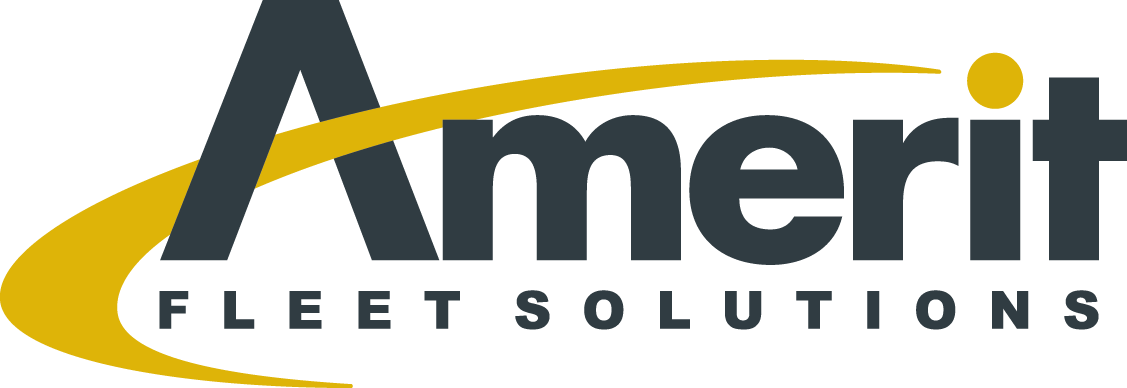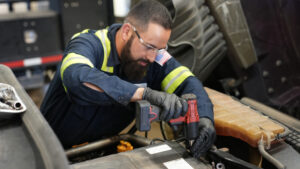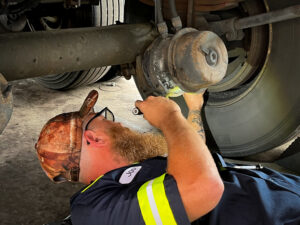Prioritizing fleet maintenance service is critical to improving uptime, reducing costs, and increasing operational efficiency for your fleet. Keeping your gas, diesel, CNG, work trucks and electric vehicles, as well as your trailers, refrigerated units and material handling equipment up and working can be a challenge. From ongoing preventative maintenance to unscheduled repairs, long wait times for service and the cost of services themselves, we know the demands quickly add up.
So how can you prioritize fleet maintenance service to improve uptime? We believe every fleet can achieve greater uptime, reduced costs, and improved operational efficiency and 100% compliance by planning ahead, implementing a preventative maintenance program, establishing a strategic parts purchasing program, and optimizing scheduling technology.
Planning Ahead: Why Having a Plan Can Help You Prioritize Fleet Maintenance Service
Planning ahead requires equal parts data collection, asset management and identifying demand patterns. Here are a few focus points to consider:
- How many assets does your fleet own, lease, or plan to buy in the next 12-months?
- (If the information is not current) How many Class 1-4 vehicles and Class 5-8 vehicles does your fleet have? What is your average fleet vehicle? I.e. CNG, Refrigerated Trailer, Tractor Trailer, etc.
- What is the age, vehicle mileage, and current condition of each asset?
- What is the average route of your fleet; national, regional, or local? Does your fleet travel through extreme terrain or face challenging weather conditions?
- When is your fleet in highest demand? When is the optimal time for fleet maintenance service? First, second, or third shift?
- How often do your vehicles receive routine maintenance services? Is there a standard preventative schedule? What about required DOT inspections?
- How many vehicles can be downed without impacting your bottom line at one time?
- What determines your fleet maintenance budget and how frequently is your fleet over or under that projection?
As stated above, there are many factors to consider to truly plan ahead. Working with an up-to-date fleet list and understanding your fundamental fleet maintenance service needs is a great first step in the right direction to increasing uptime and reducing costs. Planning ahead helps you better understand what it will take to keep your fleet operating at peak efficiency. And it can help you identify obstacles that prevent you from your goals by being prepared for breakdowns, delays, and unexpected expenses.
Implementing a Preventative Maintenance Program: Why Routine Maintenance is Vital for Fleet Maintenance Service
Vehicle breakdowns are one of the primary reasons fleets experience unscheduled downtime. While electric vehicles require less maintenance than traditional ICE (internal combustion engine) vehicles, many fleets are still in the beginning stages of adopting EVs or ZEVs (Zero emission Vehicles) technology. Even with electric vehicles and zero emission vehicles, zero emission does not mean zero maintenance. These assets need preventative maintenance and break-fix warranty support like all traditional vehicles.
One of the best ways to improve the uptime of your fleet and reduce costs is to implement a preventative maintenance (PM) program. Here are a few tips to set up an efficient PM program for your fleet:
- Prioritize fleet maintenance service, don’t delay inspections or routine maintenance. Set a schedule and stick to it.
- Define the details. The details are the criteria you use to determine which vehicles need to be scheduled for inspections, preventative maintenance, and warranty repair/break-fix repairs. These details can include details from the list above including mileage, usage, age, and warranty.
- Determine your fleet’s pain points – does your fleet struggle with warranty support, DOT inspections, routine maintenance, or all of the above? Which of these areas is impacting your bottom line the most?
- Determine when technicians can complete recommended repairs, and complete repairs when there is a first sign of a problem rather than before the next DOT inspection.
- This helps reduce unexpected breakdowns between inspections and reduce maintenance costs over the life of the vehicle rather than cutting costs in the short-term.
- Utilize both mileage and time-based PM intervals. Many urban fleet vehicles experience frequent starts and stops, and lengthy idle periods, but don’t travel many miles. It’s a good practice to have both time and mileage based PMs to ensure your vehicles have regular fluid replacements and safety inspections.
Establish a Strategic Parts Purchasing Program: How to Save Money With The Proper Inventory and Relationships
Planning ahead and implementing a PM program are critical to improving uptime and decreasing costs for your fleet. But once a problem is determined with a vehicle, accessing the appropriate parts can considerably change the timeframe in which the vehicle is fixed and able to get back to its route. And when it comes to getting vehicles back on the road quickly, many companies face one limiting factor: the availability of parts. This is where a strategic parts program can help.
At Amerit, we have teams dedicated across the country to execute strategic parts programs. We believe this is essential in helping fleets prioritize fleet maintenance service. Our programs ensure that you have the parts you need for routine maintenance before you need them, preventing technicians from sitting idle because they don’t have the proper parts to complete repairs. Our teams calculate milage, usage, vehicle age and use case, and overall health when it comes to building inventory, and each of our customers determines the depth and cost of their inventory before we make the purchases. Additionally, we consider factors like most frequently used parts and most difficult to acquire parts. Knowing which parts are needed frequently and which parts are typically on backorder helps us set min/max quantities for proper stocking levels that are specific to each location.. This ensures full control of our clients to modify their budgets and inventory based on risk and seasonal demand.
While purchasing parts ahead of time may seem expensive, remember that no part is more expensive than the cost of vehicle downtime.
Optimizing Scheduling Technology: How Custom Maintenance Portals Can Improve Your Operational Efficiency
Each fleet utilizes their own variation of telematics, maintenance software, and a combination of other software to understand and analyze efficiency. In order to prioritize your fleet maintenance service, a maintenance portal is key.
Amerit uses a HUB, a proprietary, custom-built portal to communicate maintenance needs, order parts, and schedule services with our customers. While our technology is proprietary, developed and managed entirely in-house, we have seen the positive impact it has had on the following:
- Reducing confusion and back-and-forth communication between fleet operators, drivers, and the mechanics working on the vehicles
- Reducing waiting times for services and routine maintenance.
- The HUB allows operators to schedule maintenance during routine downtime rather than altering their routes or asking drivers and vehicles to take different shifts entirely for assets to be serviced.
- Improving uptime by getting vehicles on the road faster
- Improving operational efficiency by combining one platform for billing, parts purchasing, report data and maintenance requests
Conclusion
There are many factors to consider when looking to improve the uptime of your fleet, reduce costs, and increase operational efficiency. We believe a multi-faceted approach to prioritize fleet maintenance service over other areas can create meaningful impact and add significant improvement to your business’ bottom line.
At Amerit, we are committed to offering the industry-leading fleet services that transportation companies need to maximize uptime. To learn more about how we can help with your fleet maintenance needs, contact our sales team by filling out this form, or keep in touch by following us on Facebook and LinkedIn.




